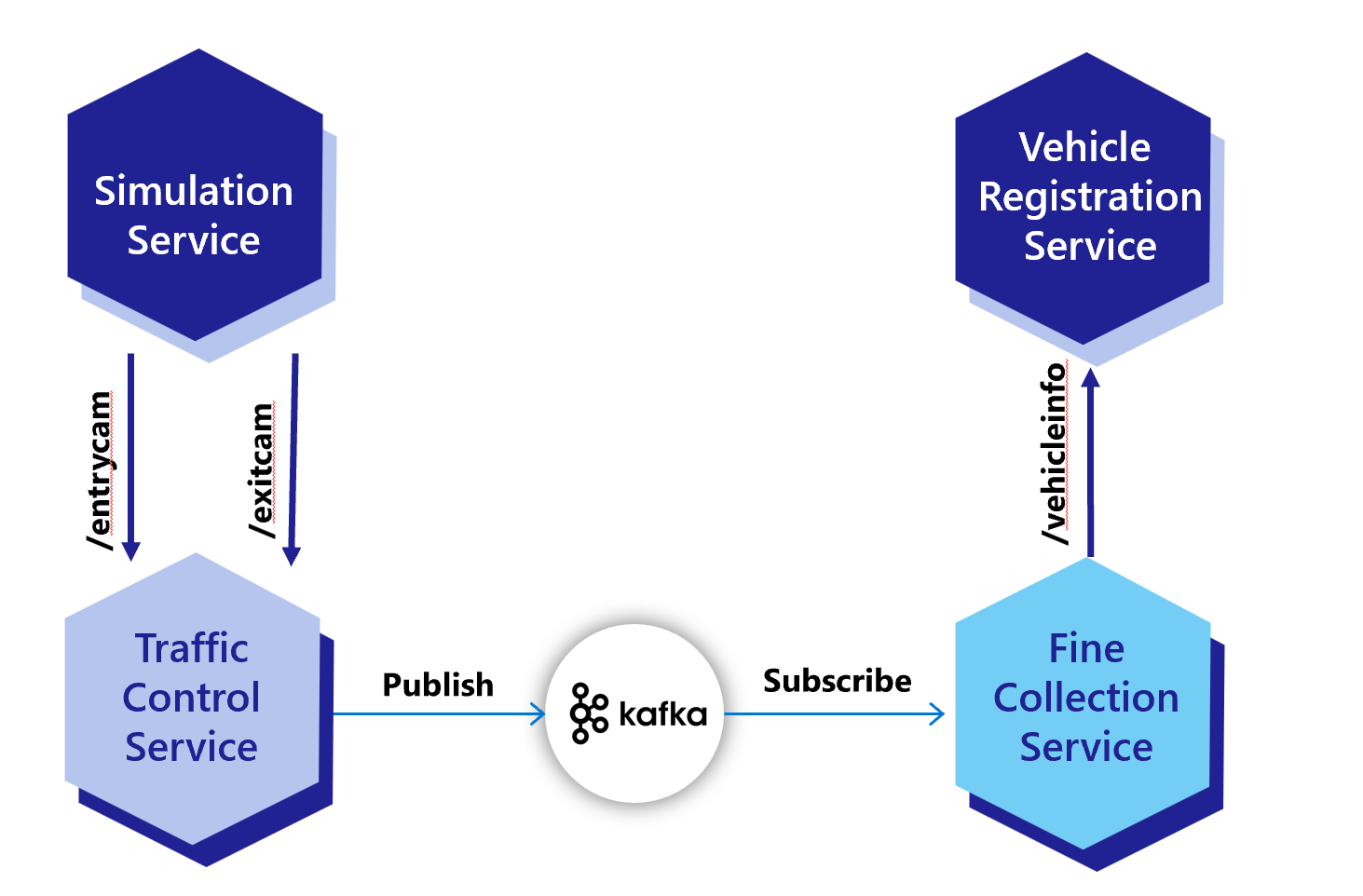Java Dapr Workshop for Azure Kubernetes Service and Azure Container Apps
Introduction
This workshop teaches you how to apply Dapr to a Java microservices application and enable developers to move between multiple pub-sub, state stores and secret store components seamlessly. It also demonstrates Dapr’s builtin support for distributed tracing using any backend monitoring tools. Finally, the workshop provides hands on experience in deploying the microservices in both Azure Kubernetes Service (AKS) and Azure Container Apps
The domain
For the assignments you will be working with a speeding-camera setup as can be found on several Dutch highways. This is an overview of the fictitious setup you’re simulating:

There’s 1 entry-camera and 1 exit-camera per lane. When a car passes an entry-camera, the license-number of the car and the timestamp is registered.
When the car passes an exit-camera, this timestamp is also registered by the system. The system then calculates the average speed of the car based on the entry- and exit-timestamp. If a speeding violation is detected, a message is sent to the Central Fine Collection Agency (or CJIB in Dutch). They will retrieve the information of the owner of the vehicle and send him or her a fine.
Architecture
At the begining of the workshop, the microservices application is as follows:

- The Camera Simulation generates a random license-number and sends a VehicleRegistered message (containing this license-number, a random entry-lane (1-3) and the timestamp) to the
/entrycamendpoint of the TrafficControlService. - The Traffic Control Service stores the VehicleState (license-number and entry-timestamp).
- After some random interval, the Camera Simulation sends a VehicleRegistered message to the
/exitcamendpoint of the TrafficControlService (containing the license-number generated in step 1, a random exit-lane (1-3) and the exit timestamp). - The TrafficControlService retrieves the VehicleState that was stored at vehicle entry.
- The TrafficControlService calculates the average speed of the vehicle using the entry- and exit-timestamp. It also stores the VehicleState with the exit timestamp for audit purposes, but this is left out of the sequence diagram for clarity.
- If the average speed is above the speed-limit, the TrafficControlService publishes SpeedingViolation payload to kafka topic test.
- The FineCollectionService subscribes to kafka topic test.
- The FineCollectionService calculates the fine for the speeding-violation.
- The FineCollectionSerivice calls the
/vehicleinfo/{license-number}endpoint of the VehicleRegistrationService with the license-number of the speeding vehicle to retrieve its vehicle- and owner-information. - The Vehicle Registration Service offers 1 HTTP endpoint:
/getvehicleinfo/{license-number}for getting the vehicle- and owner-information of a vehicle.
End-state with Dapr applied
During the workshop, you will be adding Dapr to the microservices application to use several pub/sub components and you will deploy the application to AKS and ACA. After completing all the assignments (including the bonus assignments), you should have the following architcture:

The pub/sub component could differ from the one used in the diagram above. You can also try other state stores and secret stores. Please refer to the Dapr documentation for more information.
If you want to deploy the architecture above to Azure Container Apps, you can follow the Azure Container Apps Challenge that is a step-by-step workshop dedicated to Azure Container Apps, Dapr, Keda and Java.